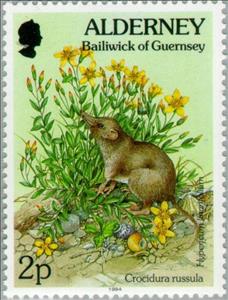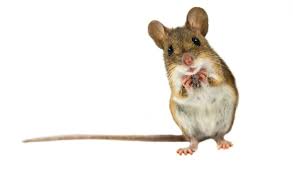Stamp: Flax-leaved St John's-wort (Hypericum linifolium), Greater W (Alderney 1994)
Flax-leaved St John's-wort (Hypericum linifolium), Greater W (Alderney 1994)
05 May (Alderney ) within release Flora and Fauna goes into circulation Stamp Flax-leaved St John's-wort (Hypericum linifolium), Greater W face value 2 Guernsey penny
| Stamp Flax-leaved St John's-wort (Hypericum linifolium), Greater W in catalogues | |
|---|---|
| Michel: | Mi:GG-AL 66 |
| Stanley Gibbons: | Sg:GG-AL 61 |
Stamp is vertical format.
Also in the issue Flora and Fauna:
- Stamp - Blue-tailed Damselfly (Ischnura elegans), Thread-leaved Wate face value 1;
- Stamp - Flax-leaved St John's-wort (Hypericum linifolium), Greater W face value 2;
- Stamp - Northern Fulmar (Fulmarus glacialis), Sour Fig (Carpobrutus face value 3;
- Stamp - Dark Clouded Yellow (Colias croceus), Red Clover (Trifolium face value 4;
- Stamp - White-tailed Bumblebee (Bombus lucorum), Greater Broomrape ( face value 5;
- Stamp - Dartford Warbler (Sylvia undata), Clover Dodder (Cuscuta epi face value 6;
- Stamp - Peacock (Inachis io), Dwarf Thistle (Circium acaule) face value 7;
- Stamp - Mole (Talpa europaea), Bluebell (Hyacinthoides non-scripta) face value 8;
- Stamp - Great Green Bush-Cricket (Tettigonia viridissima), Gorse (Ul face value 9;
- Stamp - Six Spottet Burnet Moth (Zygaena filipendula), Viper's Buglo face value 10;
- Stamp - Common Blue (Polyommatus icarus), Pyramidal Orchid (Anacampt face value 16;
- Stamp - Common Blue (Polyommatus icarus), Pyramidal Orchid (Anacampt face value 16;
- Stamp - Common Blue (Polyommatus icarus), Pyramidal Orchid (Anacampt face value 16;
- Stamp - European Rabbit (Oryctolagus cuniculus), Eagle Fern (Pteridi face value 20;
- Stamp - Great Black-backed Gull (Larus maritimus), Sand Crocus (Romu face value 24;
- Stamp - Atlantic Puffin (Fratercula arctica), English Stonecrop (Sed face value 30;
- Stamp - Emperor Moth (Saturnia pavonia), Black Berry (Rubus fruticos face value 40;
- Stamp - European Hedgehog (Erinaceus europaeus), Pink-sorrel (Oxalis face value 50;
- Stamp - Common Tern (Sterna hirundo), Bermuda Grass (Cynodon dactylo face value 1;
- Stamp - Great Black-backed Gull (Larus maritimus), Sand Crocus (Romu face value 24;
- Se-tenant - Great Black-backed Gull (Larus maritimus), Sand Crocus (Romu face value 2*24;
- Stamp - Great Black-backed Gull (Larus maritimus), Sand Crocus (Romu face value 24;
Stamp Flax-leaved St John's-wort (Hypericum linifolium), Greater W it reflects the thematic directions:
A flower, sometimes known as a bloom or blossom, is the reproductive structure found in plants that are floral (plants of the division Magnoliophyta, also called angiosperms). The biological function of a flower is to effect reproduction, usually by providing a mechanism for the union of sperm with eggs. Flowers may facilitate outcrossing (fusion of sperm and eggs from different individuals in a population) or allow selfing (fusion of sperm and egg from the same flower). Some flowers produce diaspores without fertilization (parthenocarpy). Flowers contain sporangia and are the site where gametophytes develop. Many flowers have evolved to be attractive to animals, so as to cause them to be vectors for the transfer of pollen. After fertilization, the ovary of the flower develops into fruit containing seeds. In addition to facilitating the reproduction of flowering plants, flowers have long been admired and used by humans to beautify their environment, and also as objects of romance, ritual, religion, medicine and as a source of food.
Mammals are any vertebrates within the class Mammalia (/məˈmeɪli.ə/ from Latin mamma "breast"), a clade of endothermic amniotes distinguished from reptiles (including birds) by the possession of a neocortex (a region of the brain), hair, three middle ear bones and mammary glands. All female mammals nurse their young with milk, secreted from the mammary glands. Mammals include the largest animals on the planet, the great whales. The basic body type is a terrestrial quadruped, but some mammals are adapted for life at sea, in the air, in trees, underground or on two legs. The largest group of mammals, the placentals, have a placenta, which enables the feeding of the fetus during gestation. Mammals range in size from the 30–40 mm (1.2–1.6 in) bumblebee bat to the 30-meter (98 ft) blue whale. With the exception of the five species of monotreme (egg-laying mammals), all modern mammals give birth to live young. Most mammals, including the six most species-rich orders, belong to the placental group. The largest orders are the rodents, bats and Soricomorpha (shrews and allies). The next three biggest orders, depending on the biological classification scheme used, are the Primates (apes and monkeys), the Cetartiodactyla (whales and even-toed ungulates), and the Carnivora (cats, dogs, seals, and allies).
A mouse (pl.: mice) is a small rodent. Characteristically, mice are known to have a pointed snout, small rounded ears, a body-length scaly tail, and a high breeding rate. The best known mouse species is the common house mouse (Mus musculus). Mice are also popular as pets. In some places, certain kinds of field mice are locally common. They are known to invade homes for food and shelter.
Animals are multicellular, eukaryotic organisms of the kingdom Animalia (also called Metazoa). All animals are motile, meaning they can move spontaneously and independently, at some point in their lives. Their body plan eventually becomes fixed as they develop, although some undergo a process of metamorphosis later on in their lives. All animals are heterotrophs: they must ingest other organisms or their products for sustenance.
Flora is the plant life occurring in a particular region or time, generally the naturally occurring or indigenous—native plant life. The corresponding term for animal life is fauna. Flora, fauna and other forms of life such as fungi are collectively referred to as biota. Sometimes bacteria and fungi are also referred to as flora, as in the terms gut flora or skin flora.





